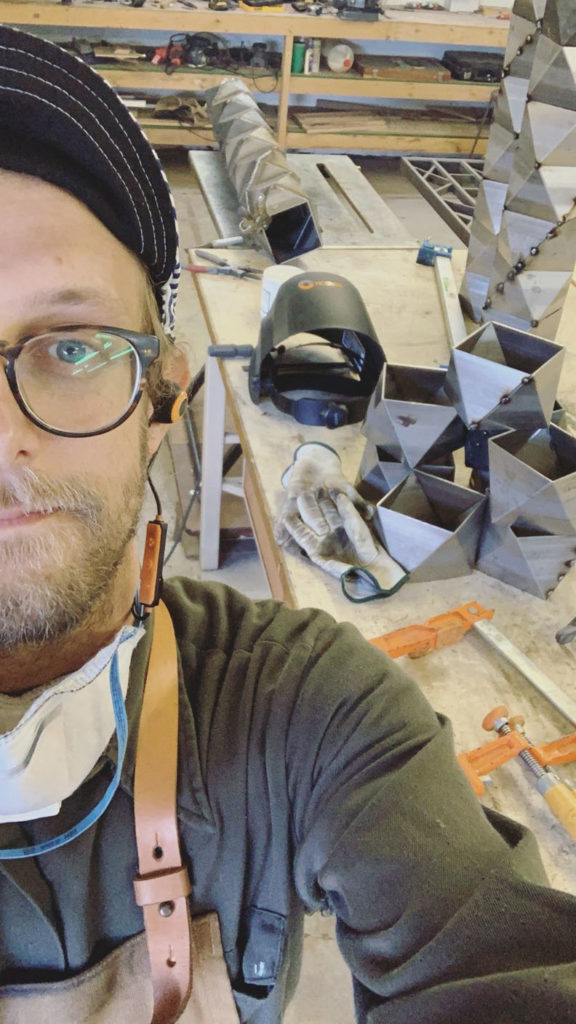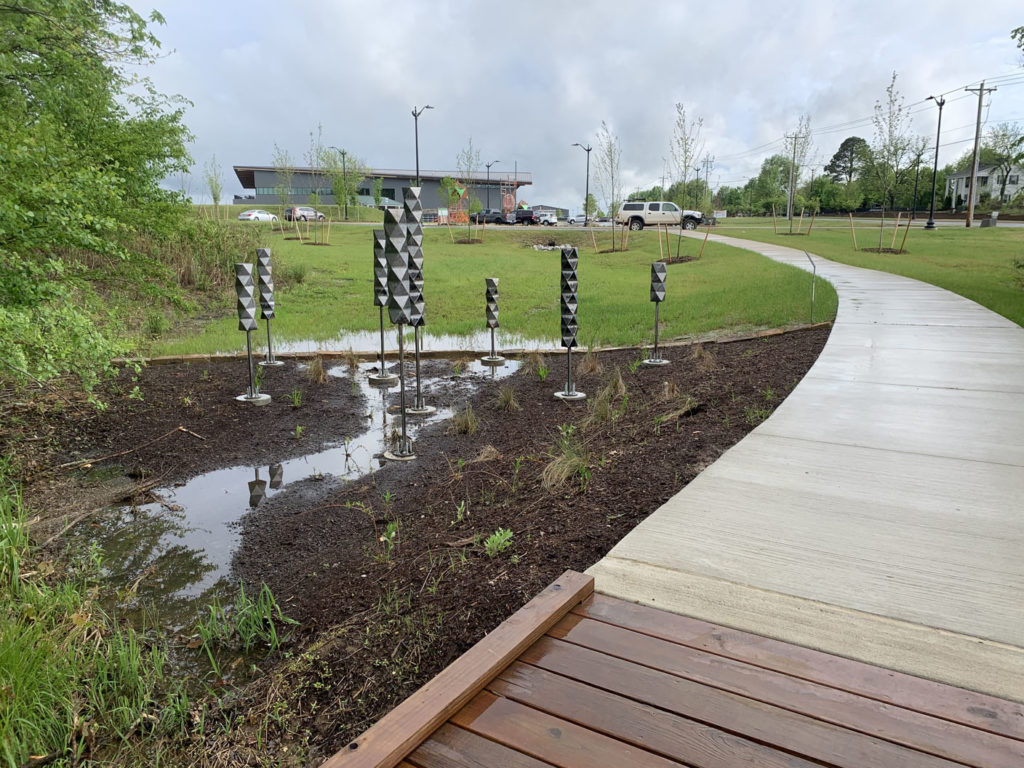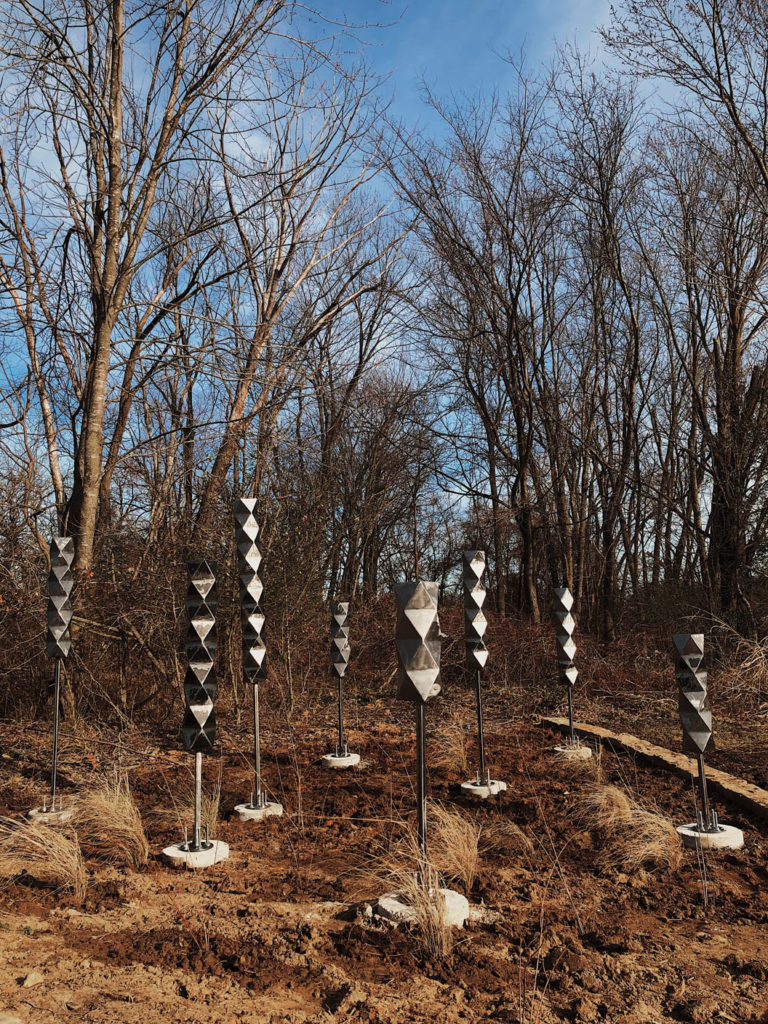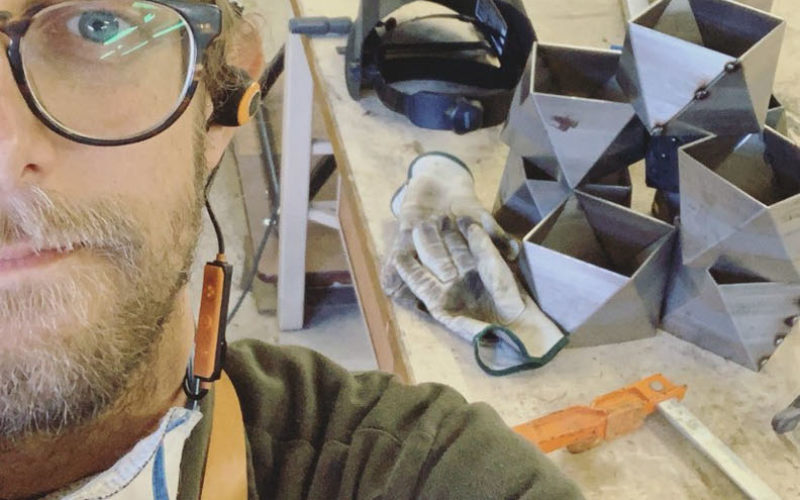
BECCA MARTIN-BROWN
bmartin@nwaonline.com
In Bentonville, says Tom Hoehn, the Public Art Advisory Committee has four specific goals for the work it selects and commissions: To foster diversity, equity and inclusion; to enhance the community’s visual environment; to promote awareness of the city’s social, cultural and historical composition; and to increase excitement, access and engagement with public art.
“Amazingly, there are more than 130 works of public art in our community,” says Hoehn, who is chairman of the committee. And one of the newest, located in Lake Bentonville Park, is “A Tribute to the Almost Forgotten Osage Prairie” by Jonathan Perrodin.
Here, Perrodin, who has lived with his wife and two children in downtown Springdale for 15 years, answers five questions for The Free Weekly.
Q. What were you like as a child — bookworm, artist? And what childhood experience drew your attention to art?

A. I liked science and nature a lot as a kid. I can remember looking at a Jacques Cousteau book again and again, too young to read the content but just mesmerized by the images. There was a great science museum in Fort Worth that I ended up spending a lot of time at when I was around 10 years old. Dinosaurs were big then, “Jurassic Park” had just come out, and I was fascinated with it all. That got me reading Michael Crichton’s science fiction novels. I continue to read voraciously; it’s the fuel to much of my artistic energy and curiosity.
Q. Have you always worked as an artist?
A. It’s been a process. It’s taken me a while to understand and accept myself as an artist. I’ve had to learn how to be an artist while also working other jobs including co-creating and running The Little Craft Show for over 10 years with my wife. When I wasn’t creating work for myself, I was helping to create an avenue for other artists to showcase their work. I am still doing that today with our artist studio and gallery space in downtown Springdale called Perrodin Supply Co. We host community gatherings, art parties and exhibitions.
Q. What inspired this piece of art and how did it come to fruition?
A. This piece comes from an extended exploration of science ranging in themes from quantum physics, sacred geometry, all the way to the ecology of the Ozarks in a quest to create a work that was deeply wedded to the land and its history. It didn’t come all at once, but it’s the accumulation of many related but distinct queries over the last few years. It originated out of a deep desire to give tribute to the history of the land before development or settlers and to make something that continued to give.
Q. What message do you hope this work of art conveys?

A. I want the art to move the viewer. It’s an invitation to connect with the land and its history. The land is the true teacher, I just want to point a finger towards that which is unspeakable. The sculptures create a space to remember and reflect on the circle of time. By watching the metal rust through the seasons of growth and death, we can gain perspective to look back on how the land has changed, acknowledging that much violence has fallen on this land before any of us were born. But also it’s hopeful that we can make things right by what we honor and remember, and that we may leave it better than we found it.
Q. What’s next for you artistically?
A. I want to continue to follow this theme of nature in the urban context, creating sculptural spaces that honor our shared history and inspire us forward.
FYI
‘A Tribute to the Almost Forgotten Osage Prairie’
Jonathan Perrodin’s sculpture can be seen at the entrance to an elevated wooden walkway that provides access to the wetlands portion of the newly opened Osage Park, adjacent to Thaden Fieldhouse on Southwest I Street in Bentonville.



